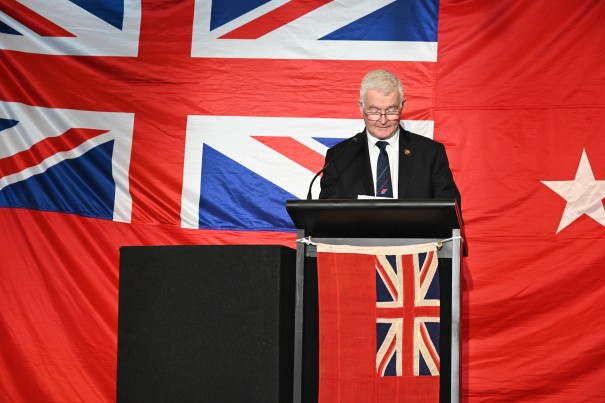Tēnā koutou katoa.
I’d like to begin by acknowledging Vincent Lipanovich, Director of the New Zealand Maritime Museum. Thank you for inviting me to be here and to speak this morning. I also wish to specifically acknowledge Kaumātua Tautoko Witika and Reverend Dr Noel Cox.
It’s my honour to join you in observing this year’s Merchant Navy Day. I could think of no more fitting venue for this commemorative service than the New Zealand Maritime Museum – this very special place where New Zealand’s rich history and relationship with the sea is preserved, celebrated, and shared.
It feels appropriate that this year’s Merchant Navy Day is also Father’s Day. When I visited this museum last year, I was given a personalised tour by one of the museum’s wonderful volunteers, Barry Parson – who I believe is with us today.
Barry showed me some of the items from his own personal collection relating to his father George’s time in the British Merchant Navy – serving as a wireless operator and radio officer for over 40 years. I remain grateful to Barry for that wonderful insight into his family’s special ties to the Merchant Navy.
As some of you may know, I have my own personal connection to this day, having served myself in the British Merchant Navy as a deck cadet before beginning my medical studies.
One of the men I worked alongside was a chippy, or carpenter, called Charlie, who was approaching retirement. He had been torpedoed and survived twice on the run between Argentina and Liverpool and in his reluctance to talk about it I got an inkling of the trauma of war.
Those several thousand New Zealand Merchant Navy seamen who served during the Second World War, did so right around the world – in the Pacific and the Arctic; across the Atlantic and through the Middle East.
Merchant Navy seafarers were ultimately civilian volunteers operating on the front line across a wide range of duties – deck officers, seamen, cooks, engineers, and radio operators and more. In the course of their service at sea, those volunteers endured almost unimaginably terrifying situations – under constant fear of attack from submarines, aircraft, and warships.
The immense bravery of those New Zealand volunteers, as well as their unwavering sense of duty and commitment, was summed up by seaman Dewi Browne: ‘The point is, a chap’s a seaman and you just keep going, war or no war – that’s your job.’
In the end, around 140 New Zealand merchant seafarers lost their lives during the Second World War, and, for most, the sea was their final resting place.
Today, we also remember those who served in the British Empire’s Merchant Marines in the First World War, including at least 68 New Zealanders who lost their lives. And we remember the New Zealand merchant ships and seafarers that carried troops to the South African War and, later, the Korean War.
I know that Merchant Navy Day is a relatively recent addition to New Zealand’s calendar of commemorations – and I wish to acknowledge all the efforts that went into making sure the sacrifices of New Zealand’s ‘Fourth Service’ are rightfully remembered.
In his history of the Merchant Navy, appropriately titled Hell or High Water, Neill Atkinson described those brave volunteer seamen as being characterised by their ‘self-sufficiency, modesty, teamwork, egalitarianism, irreverence, and an easy-going pragmatism’.
I hope Merchant Navy Day serves as a reminder to us all of these worthy qualities – as well as an opportunity to acknowledge the contribution, sacrifice, and courage of the New Zealand Merchant Navy.
Kia ora huihui tātou katoa.

